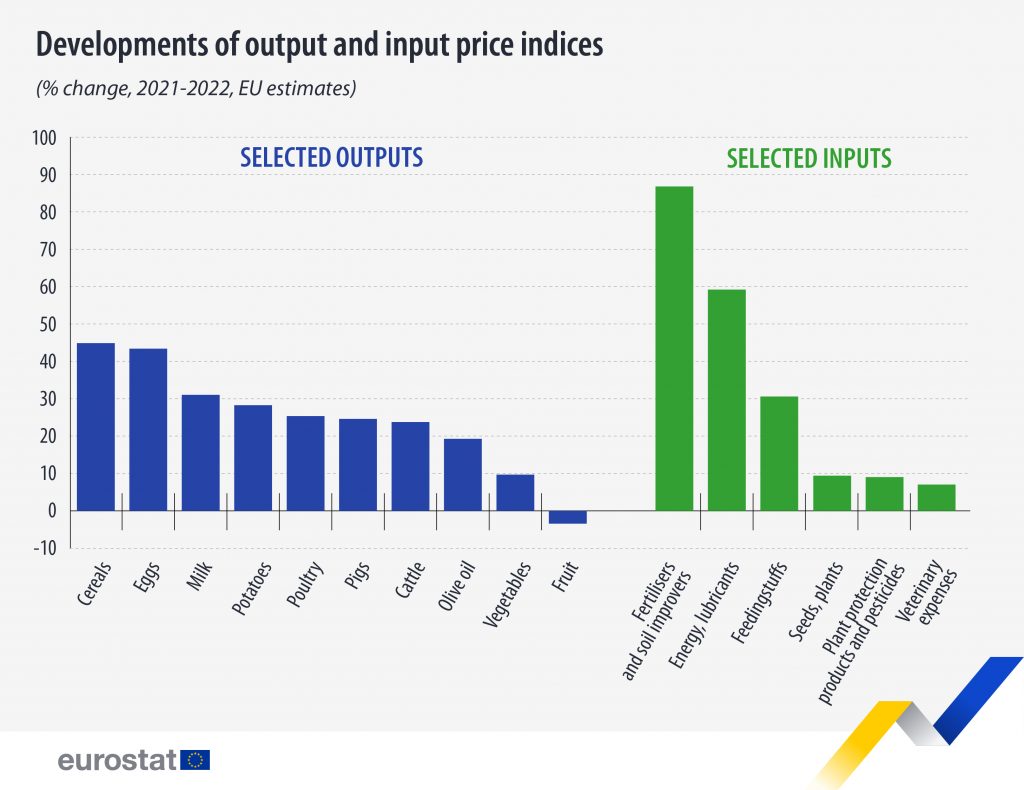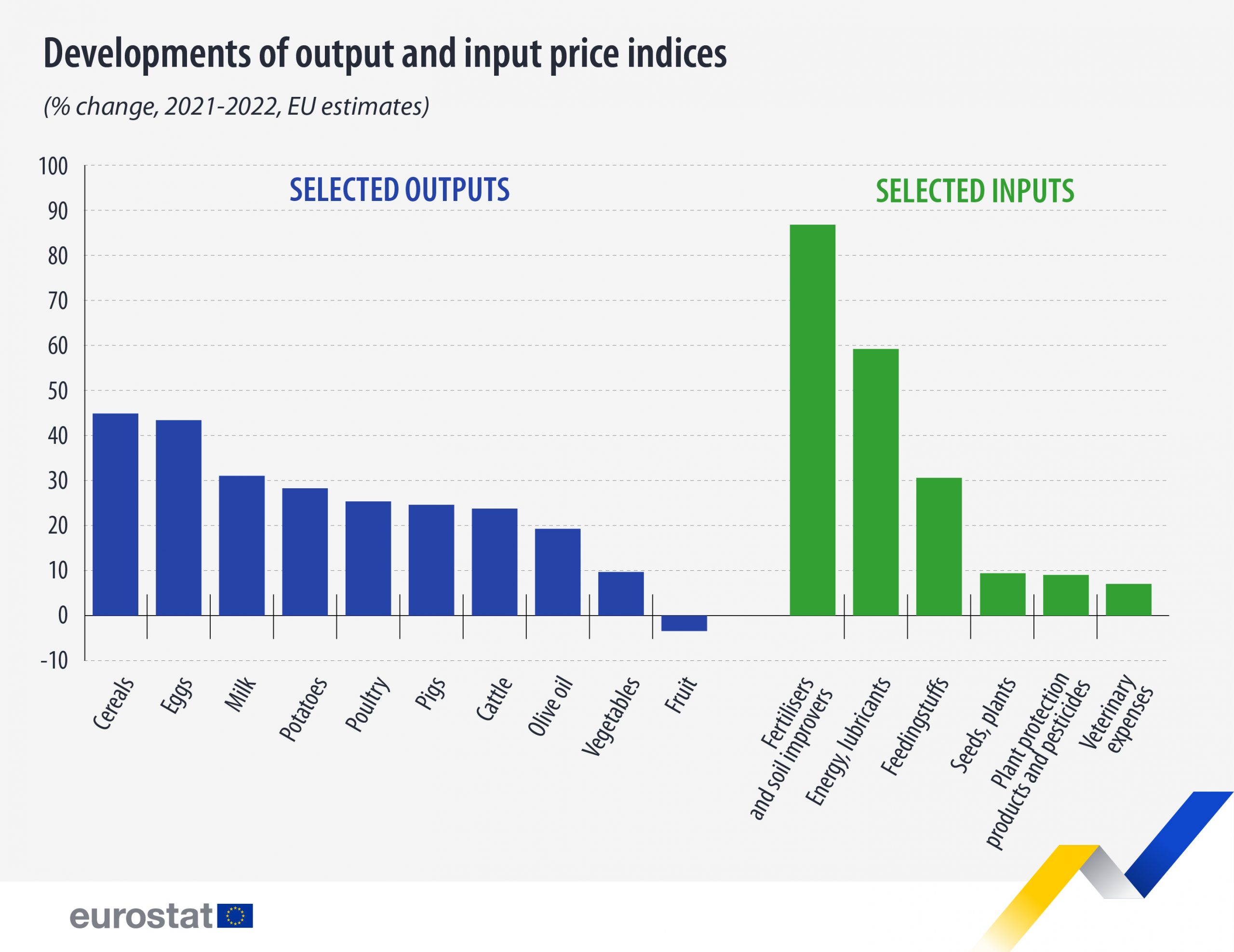Major rise in EU agricultural annual prices in 2022
According to a Eurostat report, there were three broad drivers of higher prices. The first was the disruption to global agricultural markets caused by Russia’s invasion of Ukraine. Russia and Ukraine have been major exporters of grains, wheat, maize, oilseeds (particularly sunflowers) and fertilisers. The second driver was the widespread drought, which is expected to have reduced yields on crops, including fodder crops like hay used as feed for livestock. The third was other inflationary pressures, not least the cost of energy as actions were taken to phase out the EU’s dependency on Russian fossil fuels have also driven up energy prices.
Eurostat data indicates that the average price of agricultural goods as a whole (output) in the EU increased by 24% between 2021 and 2022. The sharpest price rises were for cereals (+45 %), eggs (+43%) and milk (+31 %). Indeed, there were price rises for all product groups, with the exception of fruit (-3%).
There were also sharp price rises in the average price of goods and services currently consumed in agriculture (i.e. inputs not related to investment). There was a 30% increase for the same ‘basket’ of inputs, compared with 2021. Within this basket, there were considerable price hikes for fertilisers and soil improvers (+87%) and energy and lubricants (+59%).




